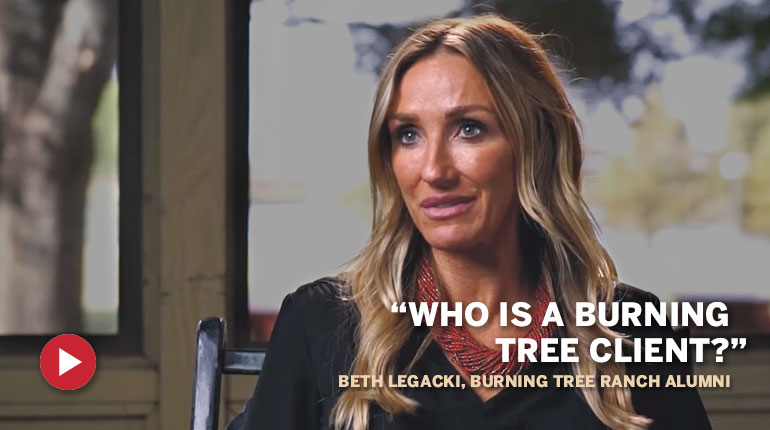Specific Learning Disorder & Substance Abuse in a Dual Diagnosis
There is a complex interplay between Specific Learning Disorders (SLDs), co-occurring conditions, and substance use. We recommend a holistic approach to care and support that addresses educational, emotional, and social needs. Individuals with SLDs may face increased stress, social challenges, and co-occurring mental health issues, factors that can contribute to a higher risk for substance use as a coping mechanism.
Specific Learning Disorders (SLDs): An Overview
Age-Related Insights
Early Detection:
SLDs often become evident in early schooling, typically when children are first exposed to the challenges of reading, writing, and math.
Lifelong Impact:
While interventions can significantly improve skills and coping strategies, SLDs are lifelong. Adults with undiagnosed or untreated SLDs may face ongoing challenges in academic, occupational, and social settings.
Sex-Related Insights
Male Prevalence:
Research indicates a higher prevalence of SLDs among males than females, though the reasons for this discrepancy are not fully understood. Some theories suggest that boys may be more genetically susceptible, or there might be biases in referral and diagnosis processes.
Expression of Disorders:
Males are more frequently diagnosed with dyslexia and other reading-related disorders. The discrepancy in diagnosis rates may also reflect social and educational biases, where boys' academic struggles are more likely to be noticed and labeled as SLDs.
Social & Cultural Factors
Children from lower socioeconomic backgrounds are at a higher risk of SLDs, partly due to factors such as reduced access to early childhood education, limited resources for diagnosis and intervention, and higher exposure to environmental toxins that can affect brain development.
Cultural and Linguistic Diversity
Non-native speakers and children learning in a second language can face additional challenges in diagnosing SLDs. It's crucial to differentiate between difficulties related to language acquisition and those stemming from a learning disorder.
Examples of Specific Learning Disorders
Dyslexia is the most common SLD, characterized by difficulties with accurate and/or fluent word recognition and poor spelling and decoding abilities.
Dyscalculia affects the ability to understand numbers and learn math facts. Individuals with dyscalculia may struggle with arithmetic, understanding time, using money, or spatial reasoning.
Dysgraphia involves difficulties with written expression, which can include handwriting, spelling, and organizing ideas.
Key Insights: Responding to the Nature of SLDs
SLDs affect a diverse group of individuals, and understanding these variations is crucial for providing appropriate support and interventions. Recognizing the lifelong nature of these disorders underscores the importance of continued support beyond the school years into adulthood.
Early Intervention is Key
- Early detection and support can lead to significant improvements. Tailored education plans and teaching strategies can help individuals with SLDs to succeed academically and professionally.
- Multifaceted Support: Effective intervention often requires academic support, skill-building, accommodations, and sometimes therapy to address associated emotional and social challenges.
- Awareness and Understanding: Increasing awareness and understanding among educators, parents, and the community is crucial to support individuals with SLDs. Reducing stigma and creating inclusive educational and work environments are essential steps.
Well-Known Individuals Who Achieved Success with a Specific Learning Disorder
To break the silence surrounding mental health, numerous public figures have bravely shared their battles with depression, underscoring the importance of seeking support. These individuals, through their openness, have contributed to changing the conversation around mental health, encouraging others to seek help and support for their struggles.
Many accomplished individuals across various fields have been open about their experiences with Specific Learning Disorders (SLDs), helping to reduce stigma and inspire others. Here are some notable figures:
- Richard Branson: The founder of the Virgin Group has dyslexia. He has spoken extensively about how his dyslexia shaped his approach to business and innovation, turning perceived disadvantages into assets.
Steven Spielberg: The renowned filmmaker was diagnosed with dyslexia later in life. Spielberg has discussed how his struggles with reading and writing influenced his storytelling and creative process. - Charles Schwab: The founder of the Charles Schwab Corporation, Schwab has dyslexia. He has been open about the challenges he faced in school and how he overcame them to build a successful career in finance.
Tim Tebow: The professional athlete and former NFL quarterback has dyslexia. Tebow speaks about how he manages his condition through coping strategies and how it has impacted his sports career and personal life. - Octavia Spencer: The Academy Award-winning actress has dyslexia. Spencer has discussed the importance of early diagnosis and support for children with learning disorders.
- Daymond John: The businessman, investor, and television personality known for his role on “Shark Tank” has dyslexia. John has discussed how he turned his challenges into strengths in the competitive business world.
These individuals demonstrate that having a Specific Learning Disorder does not preclude academic, business, or creative success. Their stories offer hope and motivation to others with SLDs, highlighting the importance of support, resilience, and recognizing one’s unique talents.
Shattering Myths: The Realities of Specific Learning Disorders
Specific Learning Disorders (SLDs) are often misunderstood, leading to misconceptions that can affect how individuals with these disorders are perceived and supported. Dispelling these erroneous beliefs is crucial for fostering a more inclusive and understanding environment. Here are key points clarifying what SLDs are not:
1. SLDs do not indicate low intelligence
- Individuals with SLDs have average or above-average intelligence. Their learning challenges are specific to certain academic skills and do not reflect overall cognitive abilities.
2. SLDs are not a result of laziness
- The difficulties faced by individuals with SLDs stem from neurodevelopmental differences that affect how they process information, not from a lack of effort or motivation.
3. SLDs are not all the same
- There’s a wide range of SLDs, each with its unique challenges. Dyslexia, dyscalculia, and dysgraphia are distinct disorders requiring different strategies and interventions.
4. SLDs are not curable
- While there’s no cure for SLDs, individuals can develop strategies to cope with and manage their challenges effectively. Early intervention and tailored support can significantly improve outcomes.
5. SLDs are not a barrier to success
- Many individuals succeed in various fields, including science, art, and business. With the proper support and accommodations, they can excel academically and professionally.
6. SLDs are not just about reading
- While dyslexia is one of the most recognized SLDs, focusing primarily on reading, other disorders impact math, writing, and other academic skills.
7. SLDs are not only diagnosed in children
- Although SLDs often become apparent in early schooling, adults can also be diagnosed with these disorders. Some individuals may not be diagnosed until later when academic or occupational challenges highlight their learning difficulties.
8. SLDs do not go away with age
- SLDs are lifelong conditions. While individuals may develop coping strategies and improve their skills over time, the underlying challenges remain. Ongoing support may be necessary to navigate academic, occupational, and daily living tasks.
Understanding what SLDs are—and are not—is essential for eliminating stigma and providing practical support to individuals affected by these disorders. Recognizing the strengths and potential of individuals with SLDs can help create a more inclusive society where everyone has the opportunity to succeed.
Exploring the Link Substance Use Among Individuals with Specific Learning Disorders
While direct research on substance abuse specifically within individuals with Specific Learning Disorders (SLDs) is limited, insights can be drawn from broader studies on neurodevelopmental disorders and educational challenges. Individuals with SLDs may face increased stress, social challenges, and co-occurring mental health issues, factors that can contribute to a higher risk for substance use as a coping mechanism. Here’s an overview based on available literature and clinical observations:
Commonly Abused Substances:
Alcohol
Impact: Individuals with SLDs might use alcohol to alleviate social anxiety or feelings of isolation resulting from their learning challenges. However, alcohol can impair cognitive functions further, affecting memory and learning abilities and exacerbating symptoms of SLDs.
Age and Sex-Specific Information: Alcohol abuse is prevalent across various age groups but may become particularly concerning in late adolescence and early adulthood, a transitional period where individuals with SLDs face increased academic and social pressures. Males are generally at higher risk of substance abuse, including alcohol, though females with SLDs also face significant risks.
Cannabis
Impact: Some individuals with SLDs might turn to cannabis for its perceived calming effects or to manage co-occurring conditions like ADHD or anxiety. While it might offer temporary relief, cannabis use can negatively affect cognitive and academic performance, potentially worsening the challenges associated with SLDs.
Statistics: Usage tends to increase in late adolescence and young adulthood, mirroring general trends in substance use.
Stimulants
(including ADHD medications):
Impact: Misuse of prescription stimulants, often prescribed for co-occurring ADHD, is a concern as individuals may use higher doses than prescribed for academic performance or recreation. While they can temporarily improve focus, misuse can lead to dependency, health risks, exacerbate anxiety, or mood disturbances.
Facts: The misuse of stimulants is more commonly reported in college-aged individuals and can be influenced by academic demands and peer behaviors.
Important Considerations
for Individuals with SLDs and the Relationship with Substance Abuse
Individuals with SLDs may be more vulnerable to substance abuse due to co-occurring mental health issues, social pressures, and the desire to self-medicate symptoms related to their learning disorder.
- Need for Support: Effective support and interventions for SLDs, including academic accommodations and therapy, can reduce the reliance on substances as coping mechanisms.
- Importance of Monitoring: For individuals with SLDs and their families, being aware of the risks and signs of substance abuse is crucial. Early intervention and seeking professional help for both the learning disorder and any substance use issues are key to managing the impact on the individual’s well-being and academic success.
Given the complex interplay between SLDs, co-occurring conditions, and substance use, a holistic approach to care and support that addresses educational, emotional, and social needs is essential for individuals with SLDs navigating these challenges.
Treatment for Co-Occurring SLDs and Substance Abuse
Final Words for Families Considering Long-Term Treatment
The connection between Specific Learning Disorders and substance use highlights the need for comprehensive support and early intervention. Individuals with SLDs face unique challenges that may increase substance use risks, underscoring the importance of tailored interventions and awareness to mitigate these risks and support their well-being and success.





